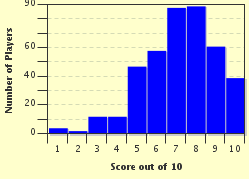Quiz Answer Key and Fun Facts
1. A slinky is not just a toy. It has been used in other fields of endeavour as well. One of these is in the field of aviation. Which of the following uses slinkies for physics experiments?
2. Doctors in 13th century Scotland recommended the use of which toy, that people mistakenly believe was invented in the 1950s, as a remedy for dislocated backs and to aid in the recovery from heart attacks?
3. What are the two missing words from this advertising jingle for a children's game?
"It's a race, it's a chase, hurry up and feed their face!
Who will win? No one knows! Feed the ... " (what?)
4. Kites have been around for several thousand years. In which country is it believed they originated?
5. Though the yo-yo has been around since at least 500 BCE, the word itself comes from the Tagalog language from the Philippines. What does "yo-yo" translate to in this language?
6. The popular board game "Snakes and Ladders" has been handed down to us from ancient India. As well as being played for fun, it was also a teaching tool in India. What was being taught?
7. This is hilarious: In 2001 a British newspaper reported that Queen Elizabeth II had a toy rubber duck in her bathroom. Whether or not this is true, what was also noteworthy about this particular rubber duck?
8. The enjoyable - or frustrating - game we know today as chess had its origins in the Gupta Empire in which ancient nation?
9. Though the Barbie doll was named after Ruth Handler's daughter, Barbara, from where did Mrs Handler originally get the idea of an adult female doll?
10. Before the advent of Play-Doh and Silly Putty and the like, we had plasticine with which to play and make our various models. This was invented in 1897 by an art teacher from which European country?
Source: Author
Creedy
This quiz was reviewed by FunTrivia editor
WesleyCrusher before going online.
Any errors found in FunTrivia content are routinely corrected through our feedback system.


